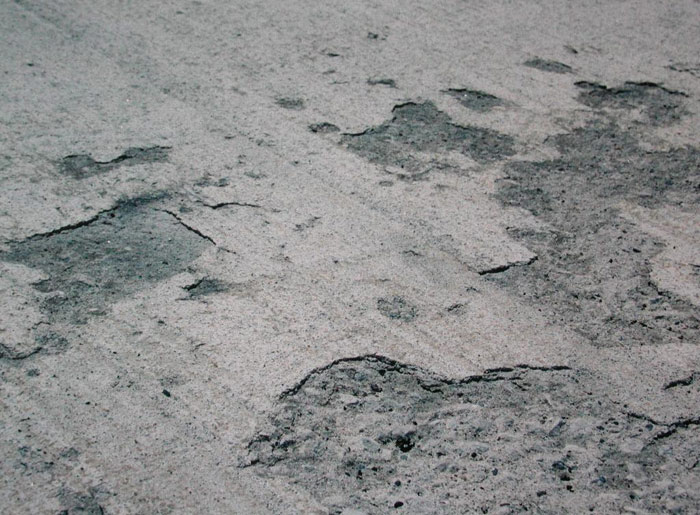Concrete, renowned for its strength and durability, can face surface deterioration over time, with one common issue being scaling. Scaling refers to the flaking or peeling of the concrete surface, revealing the underlying aggregates and compromising the aesthetics and structural integrity. This article delves into the causes, manifestations, and effective remedies for concrete scaling, providing insights into how this challenge can be addressed in the realm of construction and maintenance.
Causes of Concrete Scaling:
Understanding the root causes of concrete scaling is crucial for implementing effective preventative measures. Several factors contribute to the development of scaling:
Freeze-Thaw Cycles: In regions with fluctuating temperatures, water can penetrate the concrete. When this water freezes, it expands, exerting pressure on the concrete and causing the surface to scale.
Deicing Salts: The use of deicing salts on roads and sidewalks accelerates the scaling process. These salts lower the freezing point of water, leading to increased freeze-thaw cycles and, consequently, surface scaling.
Inadequate Air Entrainment: Concrete that lacks sufficient air entrainment is more prone to scaling. Air entrainment involves incorporating tiny air bubbles into the concrete mix, enhancing its resistance to freeze-thaw cycles.
Abrasion and Wear: Heavy traffic, abrasive materials, or harsh environmental conditions can contribute to the gradual erosion of the concrete surface, leading to scaling over time.
Manifestations of Scaling:
Scaling is visually apparent, often presenting as the peeling away of the concretes surface. The severity of scaling can range from minor flaking to more extensive and deep deterioration. The exposed aggregates create a rough and uneven surface, impacting both the appearance and functionality of the concrete.
Prevention and Maintenance:
Preventing concrete scaling requires a proactive approach and careful consideration during the construction phase. Here are key preventative measures and maintenance practices:
Proper Mix Design: Ensuring the correct proportions of concretes ingredients, including adequate air entrainment, is crucial for preventing scaling. Well-designed mixes enhance the durability of the concrete.
Surface Treatments: Applying sealers or coatings to the concretes surface creates a protective barrier, reducing water penetration and minimizing the risk of scaling. Regular reapplication may be necessary for continued effectiveness.
Drainage Improvement: Proper drainage around structures helps minimize water accumulation, reducing the potential for freeze-thaw cycles and scaling.
Avoiding Deicing Salts: Where possible, alternative deicing methods that are less harmful to concrete should be considered to mitigate the impact of salts on scaling.
Remediation Strategies:
When scaling has already occurred, remediation becomes essential. Depending on the severity of the issue, the following strategies may be employed:
a. Surface Repair: Minor scaling can addressed through surface repair techniques, such as patching or resurfacing, to restore the appearance and functionality of the concrete.
b. Abrasive Blasting: In cases of more extensive scaling, abrasive blasting can be employed to remove the damaged surface layer, exposing a sound substrate for subsequent repairs.
c. Chemical Treatments: Certain chemical treatments can be applied to mitigate the effects of scaling and enhance the concrete’s resistance to further deterioration.
Conclusion:
Concrete scaling poses a surface challenge that can impact both the aesthetics and structural integrity of concrete structures. Proactive measures during the construction phase and diligent maintenance practices are key to preventing scaling. When scaling does occur, timely remediation strategies can help restore the concrete’s appearance and functionality. As concrete technology and construction practices continue to evolve, the industry is better equipped to address and mitigate the challenges posed by scaling in various construction projects.

